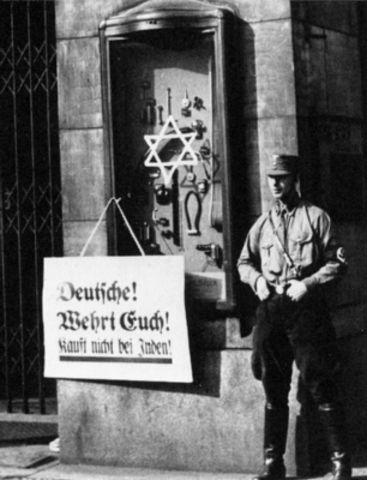In the summer of 2014, the Gaza-based terrorist organization Hamas fired thousands of rockets at Israeli civilians and used its terror tunnel network to launch attacks in Israeli territory. In response, Israel launched the defensive Operation Protective edge to eliminate Gaza’s terrorist infrastructure. This operation led to pro-Hamas demonstrations in European and North American cities, with protesters holding signs like “Israel = Racism and Genocide” and “Palestine from the river to the sea.”
These campaigns sought to demonize and delegitimize Israel, which also led to a resurgence of the political and economic warfare waged against Israel by global BDS activists. BDS stands for “Boycott, Divestment, and Sanctions” and refers to three separate, yet related, forms of punitive action against the State of Israel. BDS activists want to force a cultural, economic, academic and sporting boycott of Israel, withdrawal of investments in Israel by banks, pensions funds and other large investors, as well as sanctions enacted by world leadership. In short, they wish to isolate Israel to an extent that it will submit to any and all of their demands.
Though the term “BDS” is relatively new, Jews have been the target of boycotts throughout history. Since the Middle Ages, Jews have been subject to boycotts and formal legal exclusions. Jews were banned from owning property, attending universities, or practicing a trade. More recently, the Nazi regime started its persecution of European Jewry by imposing boycotts on Jewish-owned businesses and later by banning Jews from practicing many trades. These ongoing anti-Jewish boycotts around the world were not limited to the diaspora. Arabs in British Mandate Palestine began to boycott pre-state Israel in the 1920s. This tactic was employed to discourage Jewish immigration to Mandate Palestine and prevent the creation of a Jewish state.
In the West, BDS is seen as a progressive and grassroots campaign aimed at ending Israel’s “occupation” of the lands it captured in the Six Day War. A closer look shows that the movement is actually a political warfare campaign waged by Palestinian political groups with cooperation from radical groups in the West. BDS leaders and organizations are also linked to the Palestinian Authority leadership, the radical Muslim Brotherhood, and in some cases, even terror groups such as Hamas.
Furthermore, despite claims of nonviolence, BDS groups often exist alongside groups that support violence against Jews and the Jewish State. For example, in November 2008, the BDS National Committee produced a position paper titled “United Against Apartheid, Colonialism and Occupation: Dignity & Justice for the Palestinian People.” Among the endorsers of this paper is the London-based Popular Resistance Committees (PRC), which, according to the Israeli defense minister’s designation, is part of Hamas’ European section. Another endorser is the Swiss-based Alkarama for Human Rights. In Dec. of 2013, the U.S. Treasury categorized as “Specially Designated Global Terrorists” both the president of the Council of Alkarama, the Qatar-based Sheikh Abd al-Rahman bin ‘Umayr al-Nu’aymi, and the organization’s representative in Yemen, `Abd al-Wahhab Muhammad `Abd al-Rahman al-Humayqani, for their funding of various al-Qaeda groups.
The main organization behind the 2005 start of the modern BDS movement is the Council of National and Islamic Forces in Palestine (CNIF). The CNIF was established by Marwan Barghouti and Yassir Arafat in 2000-2001, the early days of the Second Intifada, to coordinate terrorist activity against Israel between the nationalist PLO groups and the Islamist Hamas.
With such nefarious roots and connections, the BDS movement is definitely not the progressive, peaceful movement many believe it to be. One would be wise to do some research before supporting any movement. In the case of BDS, it would be especially wise to ensure that one is not blindly supporting backers of terror and violators of human rights.

